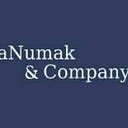What Challenges do Companies Encounter When Managing The Modern Workforce?
The workplace is constantly changing, and what it is today is far from what it was ten years ago. There are different characters and a phase-in of another generation whose work pattern differs from the previous generation. Companies must be able to manage and utilize the different ages (older workers included), incorporating their work pattern as it best suits the company.
Who is the modern workforce?
This consists of every individual working in a company, referring to every hired individual available for work. The modern workforce is those individuals in a workspace that are particular about using technology to maximize performance levels and competency in that organization.
Managing A Changing Workforce:
Various changes have occurred in the past few years concerning the workforce. They range from the transition of a younger generation into the workplace to the most recent worldwide hit that affected the workplace on a global scale — COVID-19.
The pandemic greatly affected work as most companies had to run with their employees working from home. As a result, most companies were restructured to accommodate this. This singular development influenced careers as employees could understand that maximum productivity could be attained from the comfort of one’s homes.
Post-covid, with the newer generations as employees, roles became more hybrid or fully remote. This reduced physical meetings but increased technology (as more ways to give the whole physical experience while working from home continued).
As change is constant, more changes are expected to occur. It is, however, the duty of the various companies to manage these changes.
Challenges In Managing the Modern Workforce:
Various challenges are associated with managing the modern workforce. Some of these challenges are listed below:
1)Accountability: The modern workforce works remotely or a little of both due to the pandemic. As employees start working from home, there may be no room for accountability. It is advisable to incorporate an approval process to measure employee activities. This is needed because the average remote worker is not accountable and slacks on timelines. When a function is put in place as a measure, it helps employees to be more responsible and measured based on their performances. This is one of the most influential management styles for the modern workforce.
2)Scheduling: the schedules of the modern workforce, if not properly managed, can be erratic. This occurs because of the flexible nature of the crew (remote and hybrid). Without proper scheduling, clashes would happen, and productivity would dwindle. This poses a considerable challenge in managing the workforce.
3)Retainment: The modern workforce became highly volatile after the pandemic. The exit rate of employers from companies is at a steady high. For management, this poses a challenge because as people leave, there is a need to hire and train more staff. This continues as an unending cycle, limiting the company.
Conclusion
With the advent of remote working after the pandemic, many challenges surfaced while others amplified. However, these challenges faced by the companies can be quickly resolved. With the right strategies and measures in place, the modern workforce can be managed appropriately and maximized to help company growth.
